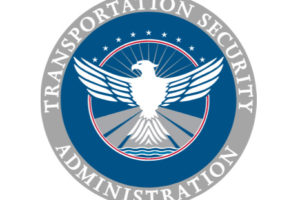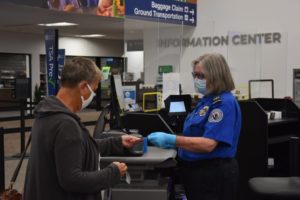Airports Efforts to Enhance Electrical Resilience

The nation's commercial service airports require continuous, reliable electricity to power airfield operations and airport facilities. FAA and airports are responsible for ensuring the resilience of airports' electrical power systems—including the ability to withstand and recover rapidly from electrical power disruptions.
GAO was asked to review major power outages at airports and steps federal agencies and airports are taking to minimize future disruptions. This report describes (1) the extent to which selected airports reported they had experienced electrical power outages since 2015, (2) actions selected airports have taken to improve the resilience of their electrical power systems, and (3) actions FAA has taken to help airports develop and maintain resilient electrical power systems.
GAO conducted semi-structured interviews with officials from 41 selected airports of varying sizes, representing 72 percent of passenger enplanements. GAO administered a follow-up survey to these 41 airports, focusing on the extent to which they had experienced electrical outages; 30 responded to the survey, representing 53 percent of total enplanements. GAO also reviewed applicable statutes and regulations and analyzed funding data to identify examples of electrical power projects. Further, GAO interviewed FAA officials and airport, academia, state government, and energy stakeholders.
A power outage can significantly disrupt an airport's operations. One 2017 outage at Hartsfield-Jackson Atlanta International Airport led to about 1,200 cancelled flights and cost an airline around $50 million.
Many of the nation's airports are enhancing their ability to withstand and rapidly recover from power disruptions. They're improving their electrical infrastructure, including installing backup generators or solar panels. Some airports are also considering installing microgrids—systems that independently generate, distribute, and store power. The FAA is offering new and expanded grant programs to help fund these projects.
Twenty-four of the 30 commercial service airports that responded to GAO's survey and interviews reported experiencing a total of 321 electrical power outages—i.e., an unplanned loss of power lasting 5 minutes or longer—from 2015 through 2022. Eleven of these airports reported having six or more outages over this 8 year period. Airports reported that these outages affected a range of airport operations and equipment (see table). Not all responding airports were able to provide detailed information about their outages, and some provided estimates about affected activities.
Selected airports reported taking several actions to improve the electrical power resilience of their airports, including (1) conducting electrical infrastructure assessments, (2) undertaking projects to improve electrical infrastructure, and (3) installing equipment to generate additional backup power. For example, 40 of the 41 airports GAO interviewed reported planning or completing an infrastructure project to increase electrical power resilience. Of these, four airports reported installing microgrids. Such microgrid systems are capable of independently generating, distributing, and storing power.
The Federal Aviation Administration (FAA) is administering new and expanded grant programs and issuing guidance to support airports' electrical resilience efforts. For example:
- Airport Improvement Program funding eligibility was expanded to include the Energy Supply, Redundancy, and Microgrids Program projects, which may include certain electrical power resilience projects.
- The new Airport Terminal Program provides funding for airport terminal development projects, including those that may strengthen resilience.
- FAA issued program guidance and conducted airport outreach to help increase airports' awareness of available federal funding for resilience projects.




